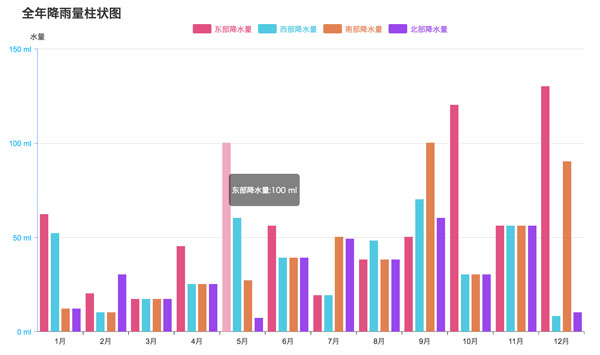详解HTML5 window.postMessage与跨域
时间:2017-05-22目标窗口win.html
<!DOCTYPE html>
<html lang="en">
<head>
<meta charset="UTF-8">
<title>Html5 postMessage</title>
<style>
#txt {
width: 500px;
height: 300px;
background-color: #cccccc;
}
</style>
</head>
<body>
<h1>The New Window</h1>
<div id="txt"></div>
<script>
window.onload = function() {
var text = document.getElementById('txt');
//监听函数,接收一个参数--Event事件对象
function receiveMsg(e) {
console.log("Got a message!");
console.log("nMessage: " + e.data);
console.log("nOrigin: " + e.origin);
text.innerHTML = "Got a message!<br>" +
"Message: " + e.data +
"<br>Origin: " + e.origin;
}
if (window.addEventListener) {
//为window注册message事件并绑定监听函数
window.addEventListener('message', receiveMsg, false);
}else {
window.attachEvent('message', receiveMsg);
}
};
</script>
</body>
</html>
回顾
通过本篇的学习,了解了使用HTML5的postMessage API在窗口间进行通信,也知道可以借助其实现跨域通信;现代浏览器基本都支持postMessage,而对于一些老式浏览器如IE7-等,可以使用一定的替代方案,进行数据通信,如window.name、url查询字符和hash片段等。
以上就是本文的全部内容,希望对大家的学习有所帮助,也希望大家多多支持。
相关文章
 有关HTML5页面在iPhoneX适配问题这篇文章主要介绍了有关HTML5页面在iPhoneX适配问题,需要的朋友可以参考下
有关HTML5页面在iPhoneX适配问题这篇文章主要介绍了有关HTML5页面在iPhoneX适配问题,需要的朋友可以参考下 html5中canvas图表实现柱状图的示例本篇文章主要介绍了html5中canvas图表实现柱状图的示例,本文使用canvas来实现一个图表,小编觉得挺不错的,现在分享
html5中canvas图表实现柱状图的示例本篇文章主要介绍了html5中canvas图表实现柱状图的示例,本文使用canvas来实现一个图表,小编觉得挺不错的,现在分享 Adobe Html5 Extension开发初体验图文教程Adobe公司出品的多媒体处理软件产品线较多,涵盖了音视频编辑、图像处理、平面设计、影视后期等领域。这篇文章主
Adobe Html5 Extension开发初体验图文教程Adobe公司出品的多媒体处理软件产品线较多,涵盖了音视频编辑、图像处理、平面设计、影视后期等领域。这篇文章主 基于HTML5的WebGL经典3D虚拟机房漫游动画这篇文章主要介绍了基于HTML5的WebGL经典3D虚拟机房漫游动画,需要的朋友可以参考下
基于HTML5的WebGL经典3D虚拟机房漫游动画这篇文章主要介绍了基于HTML5的WebGL经典3D虚拟机房漫游动画,需要的朋友可以参考下 html5实现移动端适配完美写法这篇文章主要介绍了html5实现移动端适配完美写法,需要的朋友可以参考下
html5实现移动端适配完美写法这篇文章主要介绍了html5实现移动端适配完美写法,需要的朋友可以参考下 HTML5响应式(自适应)网页设计的实现本篇文章主要介绍了HTML5响应式(自适应)网页设计的实现,小编觉得挺不错的,现在分享给大家,也给大家做个参考
HTML5响应式(自适应)网页设计的实现本篇文章主要介绍了HTML5响应式(自适应)网页设计的实现,小编觉得挺不错的,现在分享给大家,也给大家做个参考